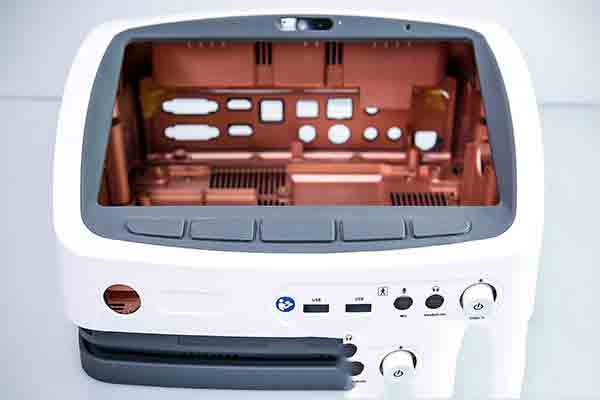
Polyurethane vacuum casting is a great way to make quick-turnaround rapid prototypes. Solid master patterns are used to cast soft silicone rubber molds, and these molds yield up to twenty copies of the original with excellent surface finishes and only a minimal investment in raw materials.
There is also another advantage to vacuum casting that many people don’t know about. We’re one of the few companies that also offer overmolding on vacuum cast parts, which means combining two or more different resins, in separate steps, to make a single finished piece. Here’s how it works and why it may be another great option for your product development needs.
What is the Purpose of Overmolding?
Overmolding creates finished products that have multiple textures, hardnesses and mechanical properties integrated into a single unified part.
This is not uncommon for production runs of plastic injection molded parts, for example to make soft textured grips on power tool handles. But few people know that it can also be done with polyurethane vacuum casting if you use the right method.
Making Patterns
Ordinary vacuum casting requires one master pattern for each molded part. Overmolding requires at least two separate patterns and two separate molds that differ slightly from one another.
The first pattern will be a replica of what the finished part should look like.
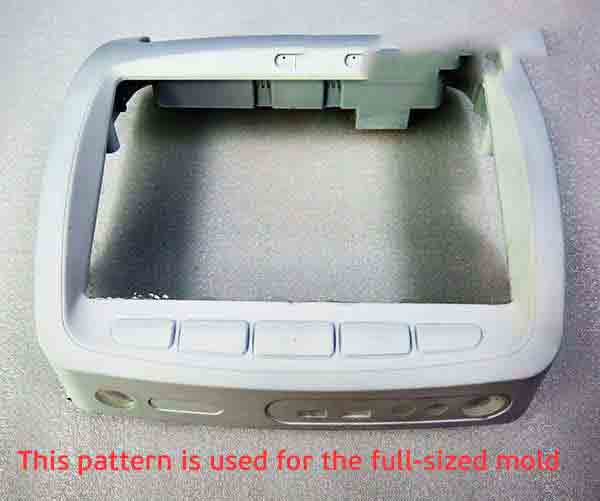
The second pattern will be similar, minus the area to be overmolded.
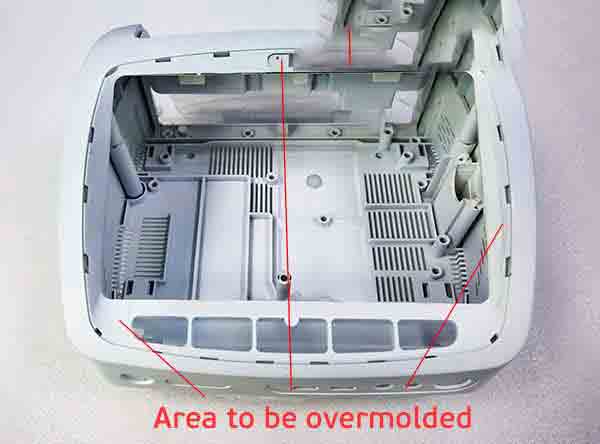
Creating these two patterns is greatly simplified with modern CAD software, which makes it simple to digitally erase sections of the 3D model where you want the overmold to be. These revised models can easily be sent to a 3D printer to create the partial patterns.
Casting Copies
Once you have these two patterns, silicone molds are cast around each in the normal way. The silicone is poured, allowed to cure, and then the molds opened and the patterns removed, yielding two empty cavities.
The smaller of the two molds, the partial one, is used to cast a copy part. Since this part will form the foundation of the build it must therefore be cast from the harder, more rigid resin material. In this example, the hard plastic enclosure will be overmolded with a soft, textured keypad and bezel surrounding the central display monitor.
After curing, again the mold is opened and the smaller, partially-completed cast copy is removed. This copy is placed into the cavity of the larger, full-sized mold.
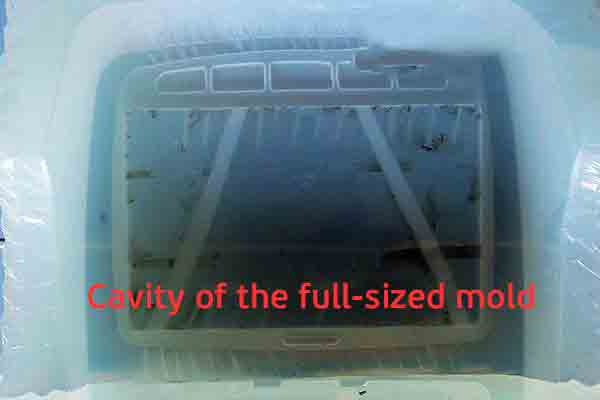
Because the cavity in the second mold is larger, when the partially-completed copy is put inside this mold there will be a slight gap between it and the walls of the cavity. This gap represents the area to be overmolded.
Overmolding
In the larger mold we make “feed lines” that lead to the overmolding area, the bezel and the keypad. After the part is placed in the mold, the mold is sealed and the secondary resin, the softer elastomer, is poured into the cavity to fill the feed lines.
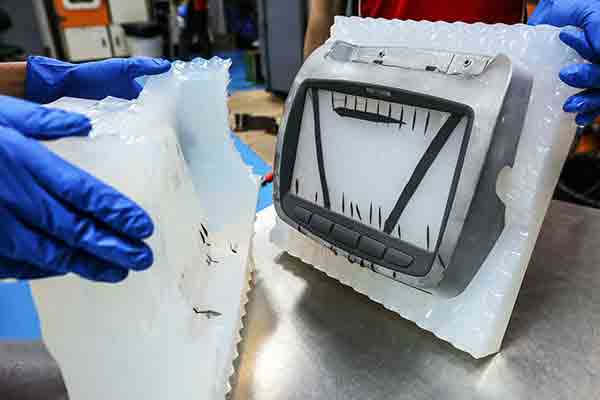
Notice that this copy has been primered to seal the surface before casting.
This mold is put into the vacuum chamber and heated until fully cured. This creates a permanent bond between the two materials.This process can in theory be done with an indefinite number of overmolding resins. In practice we recommend no more than two resins to avoid complexity and to limit the re-use of the soft silicone molds.
This is just another way we try to offer the best rapid prototyping service in the business. If you think vacuum casting might be right for your next project, upload your CAD drawings for a free quotation today.
Chris Williams is the Content Editor at Michigan CNC Machining Parts, Inc.. He is passionate about writing and about developments in science, manufacturing and related technologies. He is also a certified English grammar snob.

